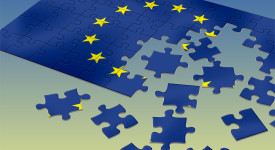Alessandro Marrone, Olivier de France and Daniele Fattibene (Istituto Affari Internazionali)
In the current unstable times, it is very important to monitor the military and defense trends of the European states and critically evaluate them. But what direction are the European military capabilities and the cooperation between countries across Europe headed? A detailed analysis of the defense budgets of the European countries reveals a growing trend of expenditures in this area and their likely increase by an average of 8.3 percent in 2016 compared to the previous year. This positive trend is, however, not the only factor and it is also necessary to look into the development of military and defense cooperation.
In recent months, this cooperation has given risen to several major trends that have been reported in 31 European countries. Bilateral cooperation remains to be its main form. Poland, which signed bilateral military cooperation agreements individually with Sweden, Germany, the United States, Bulgaria and Italy, is one example. France has started an important bilateral cooperation with Great Britain with the aim to develop a new generation of airborne anti-ship missiles. Overall, 22 cases of bilateral cooperation have been identified out of the total 39 that have been analyzed. It is also important to note that countries prefer to establish relations in defense and military exercises with neighboring countries rather than with others. 16 cases of such neighborly military cooperation have been recorded.
Another trend reveals an increased importance that countries have been lately attaching to multilateral cooperation, which is being manifested especially in the EU and NATO. In the case of the Union, these positive developments have been positively connected especially with the projects focused on improving the automation of remotely controlled aircraft and on the support of the research by the European Space Agency. Regarding the Alliance, it has been most active in the field of crisis management operations and collective defense.
Increasing defense spending and intensive cooperation within Europe are, however, not the only thing that can lead 31 European states to a greater defense self-sufficiency and responsibility. From this perspective, the latest significant trend that has been recorded is the fact that the Central, Eastern and Southeastern European countries seek to reduce their dependence on Russian military equipment. Finalizing the intergovernmental agreement between the Polish and Bulgarian Ministries of Defense, which focuses on logistical support for MIG-29 fighters, only confirms this trend. Moreover, a training center should be built in the Slovak Republic, which is designed to promote cooperation among the European owners of the UH-60M helicopters.
(The study can be downloaded here:http://www.iai.it/en/pubblicazioni/defence-budgets-and-cooperation-europe-trends-and-investments)







